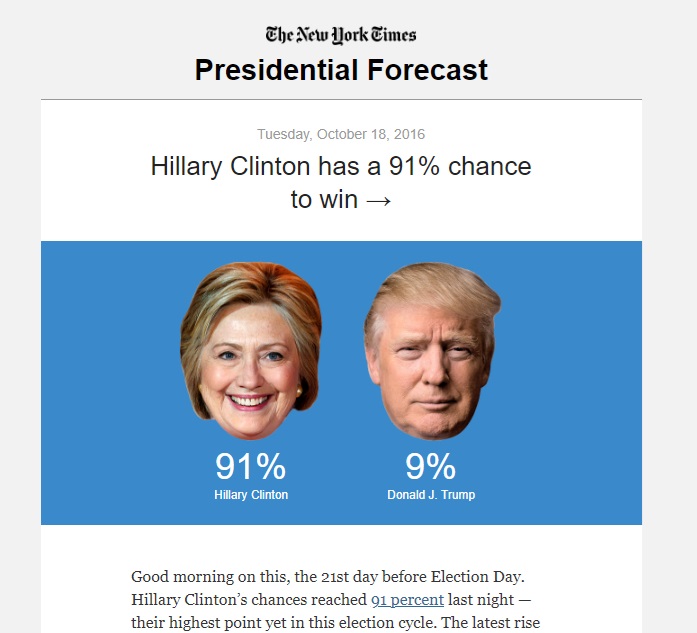The New York Times is out with a poll that says former President Donald Trump would beat President Joe Biden in five critical swing states if the 2024 presidential election were held today.
Despite the fractured media environment of 2023, the Times is still the so-called “paper of record” in the U.S., and this poll triggers widespread coverage and treatment the way all front page Times stories do. What begins as a report on poll data ends up influencing opinion as much as recording it, a peril of this kind of reporting.
Axios, for example, swiftly concludes that the poll “undermines the idea that Biden is the most electable Democrat against Trump.”
The Times worked with Siena College on the poll, which showed Nevada, Georgia, Arizona, Michigan and Pennsylvania all going Trump’s way in a national election, reversing the electoral votes of those states in 2020.
The New York Times‘s historical election coverage is probably best remembered in the public mind today for its coverage leading up to the 2016 election, when it reported weeks before the election that Hillary Clinton had a 91% chance of winning against Trump (screenshot circa 2016 below).
The Times adds dramatic flair to its numbers, with sentences like “Discontent pulsates throughout the Times/Siena poll, with a majority of voters saying Mr. Biden’s policies have personally hurt them.” The data don’t stand on their own here, but instead “pulsate.”
The poll was conducted by telephone, which means only people who answer phone calls from pollsters and volunteer their time were included.
For the poll, being dubiously presented as a real look at what voters think, only “3,662 registered voters in Arizona, Georgia, Michigan, Nevada, Pennsylvania and Wisconsin” were questioned — 732 people, on average, in each state.
The Times admits that “The margin of sampling error for each state is between 4.4 and 4.8 percentage points.” Only Nevada and Georgia showed Trump ahead by more than five percentage points. The poll — showing Trump getting 48% (to Biden’s 44%) of polled voters in Pennsylvania actually shows, considering the 732 per state average, Trump getting 352 votes — among those who answer their phones and talk to pollsters. That is the extent of the data collection driving this story.

